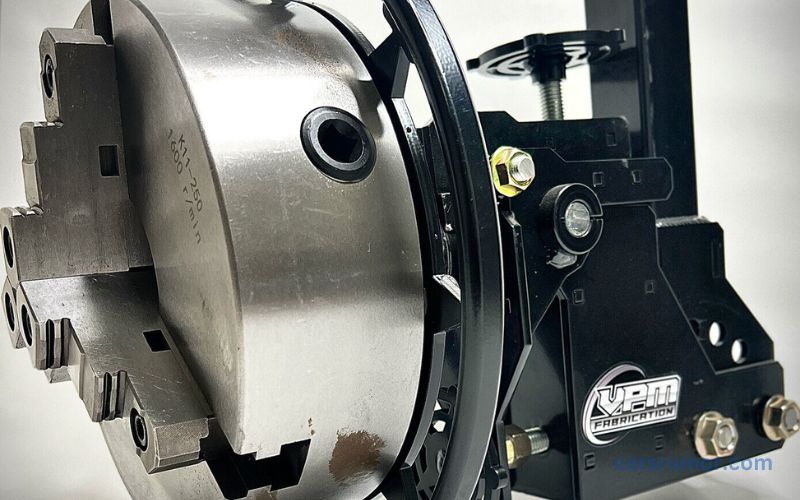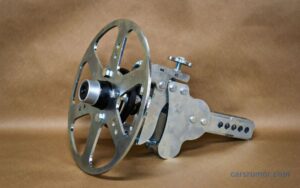The emergence of Roll Out Wheel technology in the ever-evolving landscape of transportation, stands as a defining moment—a paradigm shift that promises to revolutionize the way we move and navigate our world. This groundbreaking innovation, often referred to as the future of transportation, brings forth a wave of advancements that go beyond conventional wheels. In this comprehensive exploration, we’ll delve into the intricate details of Roll Out Wheel technology, its applications, and the transformative impact it holds for the future.
Understanding Roll Out Wheel Technology
Defining the Roll Out Wheel Concept
This technology represents a departure from traditional wheel designs. Unlike static wheels, it introduces a dynamic and adaptable system that fundamentally changes how vehicles move. At its core, this innovation embodies a shift towards increased efficiency, sustainability, and a reimagining of transportation as we know it.
The Mechanism Behind the Roll Out Wheel
Central to the Roll Out Wheels functionality is its revolutionary mechanism. Employing cutting-edge [mention the key technology or mechanism], this technology optimizes the wheel’s performance, enabling it to adapt seamlessly to various terrains and conditions. The result is a smoother and more efficient mode of transportation.
Advantages of Roll Out Wheels
Enhanced Efficiency in Motion
One of the paramount advantages of rolling Wheels lies in the significant enhancement of transportation efficiency. The dynamic nature of the wheels allows for smoother navigation, reducing friction and optimizing energy consumption. This not only improves vehicle performance but also contributes to the overall efficiency of the transportation system.
Eco-Friendly Transportation Solutions
In an era where environmental sustainability is a global priority, Roll Out Wheels emerge as eco-friendly transportation solutions. By minimizing the environmental impact through [detail environmental benefits], these wheels offer a sustainable alternative to traditional modes of transportation, aligning with the principles of green living.
Cost-Efficient Transportation
Beyond performance and environmental considerations, Wheels have the potential to revolutionize the economic aspect of transportation. The inherent efficiency and adaptability translate to potential cost savings, making this technology not only innovative but also financially viable for individuals and industries alike.
Applications in Everyday Life
Commuting Redefined
Imagine a daily commute that transcends the mundane and becomes a seamless, enjoyable experience. Roll Out Wheels have the potential to redefine commuting by [highlight features that redefine commuting]. Whether it’s navigating urban landscapes or cruising through suburban areas, the adaptability of these wheels ensures a tailored and efficient journey for commuters.
Industrial and Commercial Integration
The applications of Wheels extend beyond personal transportation. Industries and businesses stand to benefit significantly from [explore industrial and commercial applications]. From streamlined logistics to enhanced mobility within manufacturing facilities, the integration of Wheels opens doors to new possibilities.
Challenges and Innovative Solutions
Technical Challenges in Implementation
As with any revolutionary technology, it encounter technical challenges. These challenges, ranging from [outline technical challenges], are integral aspects of the innovation process. However, they also serve as opportunities for further refinement and improvement.
Prioritizing Safety in Transition
Safety considerations are paramount in the adoption of any new technology. Addressing concerns related to [highlight safety concerns] is crucial for fostering public trust and ensuring a smooth transition. Rigorous safety standards and proactive measures are essential components of the Wheel adoption strategy.
Seamless Transition Strategies
Innovation often comes with challenges, but the key lies in [propose solutions and strategies] for a seamless transition . Collaborative efforts between technology developers, regulatory bodies, and the public are essential for overcoming hurdles and ensuring a successful integration.
The Impact on Urban Planning
Redefining Transportation Infrastructure
The integration of urban planning will inevitably redefine [discuss impact on infrastructure]. The traditional model of transportation infrastructure will need to adapt to accommodate the dynamic nature of these wheels, leading to novel approaches in urban planning and design.
Smart Cities and Roll Out Wheels
This align seamlessly with the vision of smart cities. Their integration contributes to [explore the integration with smart city initiatives]. From intelligent traffic management to data-driven transportation solutions, the synergy between Roll Out Wheels and smart city initiatives paves the way for a more connected and efficient urban environment.
The Automotive Industry Of Rolling Out Wheel

Shifting Paradigms in Vehicle Design
The automotive industry is at the forefront of embracing technology. This paradigm shift in vehicle design is evident in [analyze changes in vehicle design]. From conceptual prototypes to real-world implementations, automakers are reimagining the very foundations of vehicles to accommodate the dynamic capabilities.
Collaborations Driving Innovations
Collaborations within the automotive industry are fostering [highlight collaborative efforts] to drive innovations in Roll Out Wheel technology. Partnerships between traditional automakers and tech companies are leading to breakthroughs, ensuring that the benefits of this technology are maximized across diverse vehicle models.
Public Reception and Perception
Embracing Change: Strategies for Public Acceptance
Public perception plays a crucial role in the widespread adoption of Roll Out Wheels. The key is [explore strategies] to ensure that the public embraces this transformative change positively. Education, awareness campaigns, and firsthand experiences will be instrumental in dispelling myths and building confidence in this innovative technology.
Addressing Skepticism: Clearing Misconceptions
Addressing skepticism involves [discuss strategies] to overcome reservations and misinformation surrounding Roll Out Wheels. Transparent communication, backed by scientific evidence and real-world success stories, will play a pivotal role in dispelling doubts and encouraging acceptance.
The Role of Artificial Intelligence
AI’s Integral Role in Transportation Optimization
The synergy between Roll Out Wheels and artificial intelligence [explore the role of AI] goes beyond mere integration. AI plays a pivotal role in optimizing transportation systems by [discuss AI-driven optimizations]. From predictive maintenance to real-time traffic management, the collaboration between AI and Roll Out Wheels ensures a level of efficiency and intelligence unprecedented in traditional transportation methods.
Optimizing Roll Out Wheel Technology with AI
AI’s role extends to [discuss AI-driven optimizations] that make Roll Out Wheels smarter and more efficient. The continuous learning capabilities of AI enable these wheels to adapt to changing conditions, ensuring optimal performance and safety in various scenarios.
Future Prospects and Continuous Innovations
Continuous Innovation: The Driving Force
The journey of Roll Out Wheels is an ongoing saga of [discuss continuous innovation] that propels the technology into the future. Research and development efforts continue to refine the existing technology, introducing new features and addressing challenges. The commitment to innovation ensures that Roll Out Wheels remain at the forefront of transportation advancements.
Global Adoption: A Realistic Vision
Global adoption is not a distant dream but a realistic vision that [project future scenarios] of widespread Roll Out Wheel usage. As the technology matures and becomes more accessible, envisioning a world where Roll Out Wheels are commonplace in various transportation modes is within reach.
Case Studies: Real-World Impact
Successful Implementations
Real-world success stories highlight [explore case studies] where Roll Out Wheels have made a significant impact. From urban mobility solutions to industrial applications, these case studies provide tangible evidence of the benefits and transformative potential of Roll Out Wheel technology.
Learning from Setbacks
Learning from setbacks is crucial, and [analyze setbacks] to ensure continuous improvement in Roll Out Wheel technology. Examining instances where challenges were faced and overcome contributes to the collective knowledge base, facilitating the refinement of the technology for future implementations.
Expert Opinions: Insights from Industry Leaders
Industry Leaders’ Perspectives on Roll Out Wheels
Gaining insights from industry leaders is invaluable. [Present expert opinions] on Roll Out Wheel technology, exploring the perspectives of key figures in the fields of transportation, technology, and urban planning. Their views provide a comprehensive understanding of the implications and potential future developments associated with Roll Out Wheels.
Predictions for the Future
What does the future hold for Roll Out Wheel technology? [Explore predictions] from experts on how this innovation will continue to shape the transportation landscape. From advancements in design to broader societal impacts, these predictions offer a glimpse into the trajectory of Roll Out Wheels.
Related: TRD Skid Plates
Consumer Reviews and Feedback
Real-World Experiences: Voices of Users
Consumer reviews and feedback provide valuable insights into [explore consumer experiences] with Roll Out Wheel technology. Real-world experiences, both positive and constructive, offer a holistic view of how this technology is perceived and utilized by those on the ground.
Addressing Concerns: An Open Dialogue
Addressing concerns raised by consumers is crucial. [Discuss strategies] for open communication between technology developers and users, ensuring that feedback is actively addressed and incorporated into future iterations of Roll Out Wheel technology.
Regulatory Framework and Standards

Navigating Legalities: Establishing Regulations
As Roll Out Wheels become a prominent feature of the transportation landscape, [explore the regulatory landscape] surrounding their use. Navigating legalities involves establishing regulations that ensure safety, reliability, and ethical use. Collaboration between technology developers and regulatory bodies is essential to strike a balance between innovation and adherence to standards.
Establishing Safety Standards
Central to the regulatory framework is the establishment of [discuss safety standards] for Roll Out Wheel technology. Safety standards ensure that the technology meets stringent criteria, providing a secure and reliable mode of transportation for users. Industry collaboration and adherence to these standards are critical for the responsible development and deployment of Roll Out Wheels.
Conclusion: Navigating the Road Ahead
In conclusion, Roll Out Wheel technology signifies more than just a shift in transportation; it represents a transformative journey towards a future where efficiency, sustainability, and innovation converge. As we navigate the road ahead, the continuous evolution of Roll Out Wheels is poised to redefine how we perceive and experience transportation.








